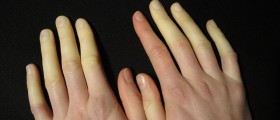
Dystonia is a condition which manifests through involuntary movement and contractions of muscles, forcing the body of the sufferer into taking unusual and strange postures. So far, dystonia has not yet been completely understood by health experts. However, it is known to be related to neurological functions of ours, meaning that the main causes of it stem from the functions in our brain.
If you suffer from dystonia, or know someone who does, the following lines will provide more information on the matter, helping you overcome this condition as much as possible.
Dystonia Movement Disorder
Dystonia is not a common condition. Nevertheless, when we talk about neurological conditions, it is one of the most frequently seen ones, affecting about 38,000 people in the UK. When it comes to dystonia appear ing in people, there are no specific rules about the susceptibility to developing this illness. Rather, it can appear in men, women and children randomly, regardless of their ethnic or social background. Yet, it is most commonly seen in people older than 40 and younger than 60.
However, there are several types of dystonia which can be diagnosed. Basically, the diagnosis focuses on the underlying cause, the affected part of the body and the age at which the initial symptoms appear.
If the division is based on the cause, dystonia can be primary or secondary. Primary distonia stands for cases where dystonia is the only symptom a person experiences, without suffering from any other forms of neurological damage or complications. On the other hand, secondary dystonia is a type of this condition where the dystonia per se is triggered by some other, underlying neurological disorders in the affected person's brain or nervous system.
Namely, the main causes of secondary dystonia are strokes, Parkinson's disease, encephalitis and braininjury.
Another way of classifying dystonia is by separating it into generalized dystonia, once the symptoms appear in most areas of the body, focal dystonia, where the symptoms affect only a single area of the body, multifocal dystonia, where the symptoms appear in two or more unrelated body parts, segmental dystonia, manifesting in two or more body parts which are close to one another and hemydistonia where the arm and leg on the same side of one's body are affected and show the symptoms of this condition.
Some other types of dystonia diagnosis focus on observing the symptoms and defining this condition as a specific syndrome.
How is Dystonia Diagnosed?
Moving on with the possible dystonia types which can be diagnosed, we need to mention dystonia muscolorum deformans, commonly referred to as DMD. This rare type of dystonia is usually genetically inherited and the symptoms of it start appear ingin early childhood, getting gradually worse as the person gets older and older. Frequently, this form of dystonia puts people in wheelchairs eventually. So, apart from dystonias which have unexplainable causes, this one stems from a mutated DYT1 gene.
Next, on of the most common type of focal dystonias is cervical dystonia, also known as torticollis. Here, the muscles in the neck area get affected by the illness, leading to the twisting of the head in a single side. Also, sometimes, the head may get moved forward or backward.
Blepharospasm is the second most frequently seen dystonia and it involves involuntary closing of the eyelids, leading to blinking occurrences which cannot be stopped. Blepharospasm usually affects only a single eye at the beginning, moving onto the other one later.
Finally, if a dystonia affects the muscles of the head area, including the neck and the face, it is classified as cranial dystonia. Here, the jaw of the sufferers may be pulled open or shut completely, leading to problems related to speaking, swallowing and performing other actions which engage this part of the body.
Therefore, doctors need to pay attention to all the possible symptoms which can be related with this condition during the diagnosis. Most of the times, observation is the main tool of dystonia diagnosis, being the first step of the process.
Next, it is crucial for the health expert to find out whether the dystonia is secondary or primary, seeing whether it happens on its own or if it can be related to some other, underlying neurological conditions. In cases of secondary dystonias, of course, treating the underlying cause most commonly results in the disappearance of the dystonia symptoms too.
Nevertheless, for the process of diagnosis, the doctor will need the entire medical history of a person, along with the history of head and brain injuries or information about dystonia present in the patient's family.
Next, urine and blood tests are done in order to check whether certain organs are related to the dystonia, leading to the symptoms of this condition due to infections or high toxin levels in the body.
Then, genetic testing takes place, where a sample of the DNA it taken and analyzed for the presence of the mutated gene responsible for dystonia.
Finally, an MRI scan shows the doctor whether the patient suffers from any brain damage such as tumors.
All in all, symptoms are very important in the process of diagnosing and classifying dystonia in patients, especially due to the fact that observation is the primary tool that a health expert uses. There is more than a single type of dystonia and a proper diagnosis can diagnose the condition properly, leading to a better treatment.




_f_280x120.jpg)






_f_280x120.jpg)





Your thoughts on this
Loading...